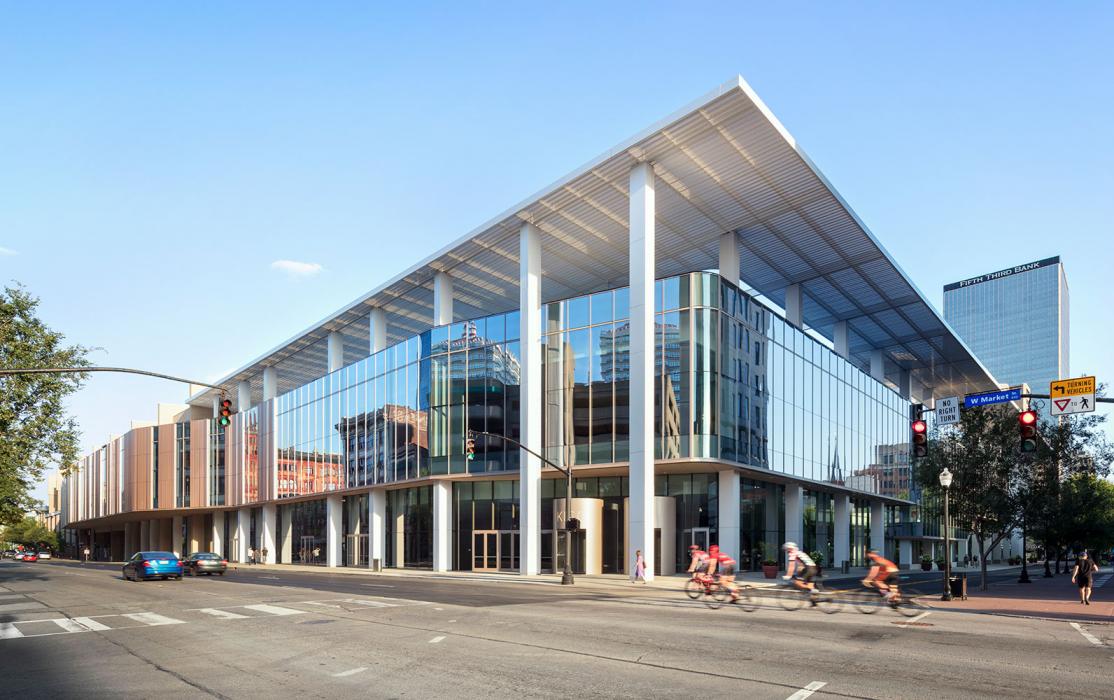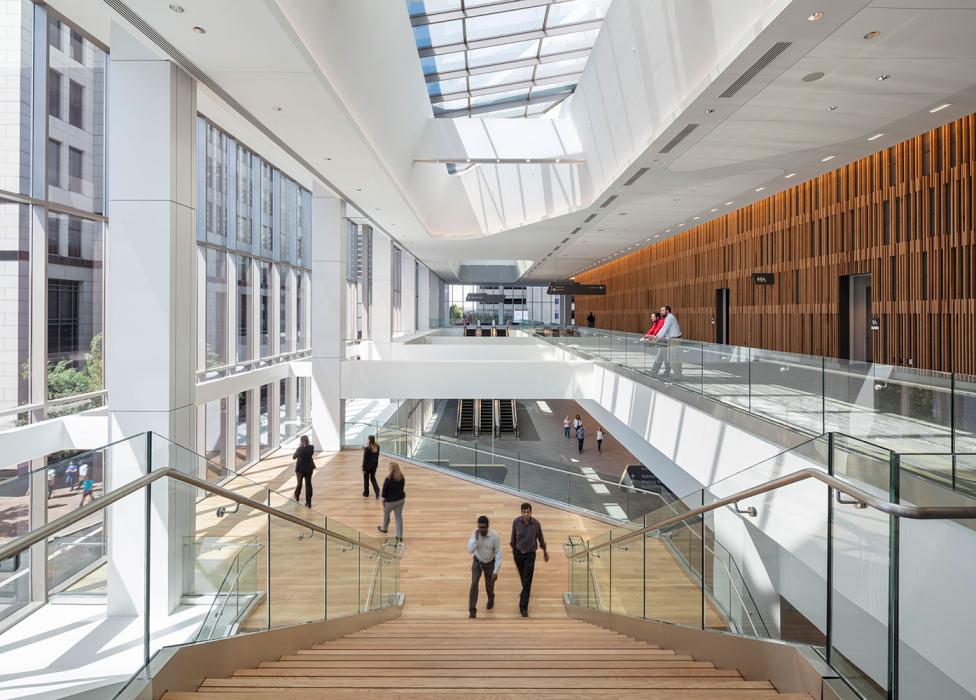
Kentucky International Convention Center
The renovated Kentucky International Convention Center elevates Louisville’s hospitality and tourism industry.
Overview
The renovated Kentucky International Convention Center elevates Louisville’s hospitality and tourism industry. The new design increases the facility’s exhibit space from 146,000 square feet to 200,000 square feet and adds a 40,000-square-foot ballroom. The predominantly vertical expansion includes a new mechanical mezzanine floor and roof structure. Because the expansion was being built over an existing basement, significant reinforcement of the existing waffle slab was required.
Collaborating with Brown & Kubican, we provided structural design services to HOK for the renovation and expansion of the facility, which was completed in 2018.
Highlights
- Our team designed a braced-frame lateral-load resisting system that supported the long-span ballroom and exhibit hall roofs as well as the mechanical floor. In the ballroom, three main trusses supported infill trusses. The exhibit hall’s three main roof trusses are supported by a new supertruss, which replaced the center’s partially demolished west wing. This design followed the slope and appearance of an existing supertruss, while the connection design used large radial gusset plates to match existing connections.
- The exhibit-hall level cantilevers over Jefferson and Market Streets, supported by the roof trusses and braced frames. The renovation also reconfigured the facility’s prefunction space to decrease confusion and improve pedestrian wayfinding and flow.
- During the design development phase, our engineers used the existing street-level waffle slab as a diaphragm to distribute all new lateral forces to the basement foundation walls. This eliminated the need to add shear walls and braced frames in the basement. This waffle slab is also the base level in our seismic design.
- These solutions greatly reduced the seismic force demand on the new and existing structures, helping to reduce construction costs and meet project budget demands.











